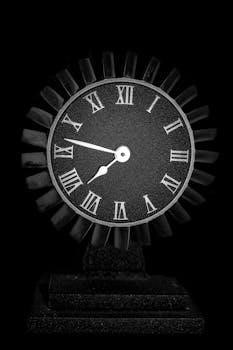The Story of an Hour⁚ An Overview
Kate Chopin’s “The Story of an Hour” is a short story exploring Louise Mallard’s sudden struggle with a turning point in her life. It showcases the protagonist’s reaction to her husband’s supposed death. The story reflects Chopin’s view of repressive roles in marriage and women’s lives.

Kate Chopin⁚ Author and Context
Kate Chopin, an American author, penned “The Story of an Hour” on April 19, 1894. Her works, including this short story, frequently delve into complex personal relationships. They explore the unsettling changes that arise when individuals experience freedom, whether real or imagined. Chopin’s psychological awareness is evident throughout her stories.
The story reflects the social situation of the time, portraying women as prisoners of their husbands. Chopin highlights the unequal power dynamics between men and women, and the physical and mental restrictions placed upon women. She critiques the repressive role that marriage played in women’s lives during the late 19th century. Her narrative underscores the need for a world that respects individual freedom and autonomy within and beyond the confines of marriage.
Chopin’s background and the historical events of her time significantly influenced “The Story of an Hour.” The story showcases many of the suffragists’ common concerns. It places at its center a woman who suddenly finds herself no longer financially or socially bound by her husband’s existence, if only briefly.
Plot Summary of “The Story of an Hour”
“The Story of an Hour” centers on Louise Mallard, who has a heart condition, as she receives news of her husband Brently’s death. Initial reports suggest he died in a railroad accident. Her sister, Josephine, and Brently’s friend, Richards, carefully deliver the news to minimize Louise’s distress, given her fragile health.
Upon hearing the news, Louise retreats to her room, grappling with a complex mix of emotions. Initially, she experiences grief and sadness. However, as she sits alone, gazing out the window, a new feeling begins to emerge. She recognizes a sense of liberation and freedom from the constraints of her marriage. She starts to imagine a future where she can live for herself, free from the expectations and control of her husband.
As Louise embraces this newfound independence, she resolves to live life on her own terms. However, this dream is abruptly shattered when Brently unexpectedly returns home, unharmed. The shock of seeing him alive, coupled with the sudden loss of her imagined freedom, leads to Louise’s death. The doctors attribute her demise to “joy that kills,” failing to understand the complex emotional turmoil she experienced.

Themes⁚ Freedom and Oppression in Marriage
In “The Story of an Hour,” Kate Chopin explores the theme of freedom and oppression within the context of marriage. The story highlights the restrictive nature of marriage in the late 19th century, particularly for women. Louise Mallard, the protagonist, experiences a profound sense of liberation upon hearing of her husband’s supposed death, revealing the oppressive constraints she felt within her marital relationship.
The news of Brently’s death initially brings grief, but soon transforms into a realization of the possibilities that lie ahead for Louise as an independent woman. Her marriage, though seemingly normal, had been a source of confinement, limiting her personal growth and self-expression. The story suggests that marriage, at the time, often prioritized societal expectations and control over individual happiness and freedom.
Louise’s fleeting vision of a life lived on her own terms underscores the stifling nature of her marriage. The tragic ending, where she dies upon seeing Brently alive, emphasizes the devastating impact of losing that newfound freedom. Chopin critiques the unequal power dynamics between men and women in marriage, portraying it as a potential source of oppression rather than a partnership based on mutual respect and individual autonomy.
Themes⁚ Identity and Self-Discovery
Kate Chopin’s “The Story of an Hour” delves into the themes of identity and self-discovery, particularly through the experiences of Louise Mallard. The story chronicles Louise’s rapid journey as she confronts the possibility of life without her husband, leading her to a profound, albeit brief, moment of self-realization.
Upon hearing the news of Brently’s death, Louise retreats into her own thoughts, gradually recognizing her suppressed desires for independence and autonomy. The realization that she can now live for herself, rather than as an extension of her husband, sparks a sense of liberation and self-discovery. This newfound freedom allows her to envision a future where she can define her own identity and pursue her own aspirations.
The story underscores the importance of individual identity and the struggle to maintain it within the confines of societal expectations and marital roles. Louise’s brief exploration of her inner self highlights the potential for personal growth and fulfillment when one is free to express their true identity. The tragic irony of the ending serves to emphasize the fragility of self-discovery and the devastating consequences of its suppression.

Literary Analysis⁚ Irony in “The Story of an Hour”
“The Story of an Hour” by Kate Chopin masterfully employs irony as a central literary device, enriching the narrative and underscoring its themes. The story’s ironic structure hinges on the contrast between appearance and reality, particularly in relation to Louise Mallard’s emotions and the ultimate cause of her death.
The most prominent form of irony is situational irony, where the outcome of events contradicts expectations. Initially, the reader anticipates Louise to be consumed by grief upon hearing of her husband’s demise. However, she experiences a surge of liberation and joy, a stark contrast to conventional mourning. This unexpected reaction highlights the oppressive nature of her marriage and her suppressed desire for freedom.
The story’s ending is profoundly ironic. Louise dies not from the grief of Brently’s return, as those around her believe, but from the crushing realization that her newfound freedom has been snatched away. The doctors attribute her death to “joy that kills,” a tragically ironic misdiagnosis that underscores the story’s critique of societal expectations and the limited understanding of women’s inner lives.
Literary Analysis⁚ Symbolism in “The Story of an Hour”
Kate Chopin’s “The Story of an Hour” is replete with symbolism, enhancing the story’s thematic depth and providing insight into Louise Mallard’s emotional journey. The open window in Louise’s room serves as a central symbol of the possibilities and freedom that await her beyond the confines of her marriage.
Through the window, Louise observes a vibrant, blossoming world, representing the new life and opportunities she envisions for herself. The “delicious breath of rain” and the sounds of the street symbolize renewal and the awakening of her senses, suggesting a future unburdened by the constraints of her marital role.
Louise’s weak heart is also symbolic, representing both her physical vulnerability and her emotional fragility within the oppressive societal norms of the time. The armchair in which she sits becomes a space of contemplation and self-discovery, a temporary sanctuary where she can explore her newfound sense of independence. Ultimately, the story itself serves as a symbol of the limited time and space afforded to women to experience freedom and self-realization in a patriarchal society.

Louise Mallard⁚ Character Analysis
Louise Mallard, the protagonist of Kate Chopin’s “The Story of an Hour,” is a complex character whose internal struggle forms the heart of the narrative. Initially presented as a woman with a weak heart, both physically and metaphorically, Louise’s character undergoes a significant transformation within the span of an hour.
Upon hearing the news of her husband’s death, Louise retreats to her room, where she grapples with a range of emotions. While she initially experiences grief, a sense of liberation gradually emerges as she contemplates a future free from the constraints of her marriage.
Louise’s character embodies the stifled desires and limited opportunities available to women in the late 19th century. Her epiphany reveals a deep-seated longing for independence and self-discovery, highlighting the oppressive nature of societal expectations. Ultimately, Louise’s tragic end underscores the profound impact of these restrictions on her identity and well-being, solidifying her as a symbol of the era’s repressed female spirit.
The Ending Explained⁚ “Joy That Kills”
The ending of Kate Chopin’s “The Story of an Hour” is famously ironic and open to interpretation, centered around the phrase “joy that kills.” After experiencing a liberating epiphany upon hearing of her husband’s supposed death, Louise Mallard unexpectedly dies when Brently returns home, alive and well.
The doctors attribute her death to “joy that kills,” suggesting that the shock of Brently’s return, combined with her weak heart, caused a fatal cardiac arrest. However, the irony lies in the fact that Louise’s death is not a result of joy, but rather the crushing disappointment of having her newfound freedom snatched away.
Her brief taste of independence awakened a longing for self-determination that she can no longer relinquish. The realization that she must return to the confines of her marriage is too much to bear, leading to a profound sense of despair and ultimately, her demise. Thus, the “joy that kills” is a misdiagnosis, masking the true cause of Louise’s death⁚ the death of her dreams and the loss of her identity.
Critical Reception and Feminist Interpretation
“The Story of an Hour” initially faced mixed reactions, with some critics finding its themes of female independence and marital dissatisfaction unsettling. However, the story has since become a staple in feminist literary analysis, lauded for its exploration of women’s roles in the late 19th century and its critique of the institution of marriage.
Feminist critics interpret Louise Mallard’s brief experience of freedom as a powerful indictment of the societal constraints placed upon women. Her desire for autonomy and self-discovery resonates with the suffragist movement’s concerns about financial and personal independence. The story highlights the unequal power dynamics between men and women, showcasing how marriage could be a restrictive force, limiting a woman’s identity and potential.
Critics often focus on the story’s subversion of traditional gender roles and its depiction of a woman’s inner rebellion against patriarchal norms. “The Story of an Hour” is celebrated for its nuanced portrayal of a woman’s complex emotions and its challenge to the prevailing social expectations of the time, cementing its place as a significant work in feminist literature.
